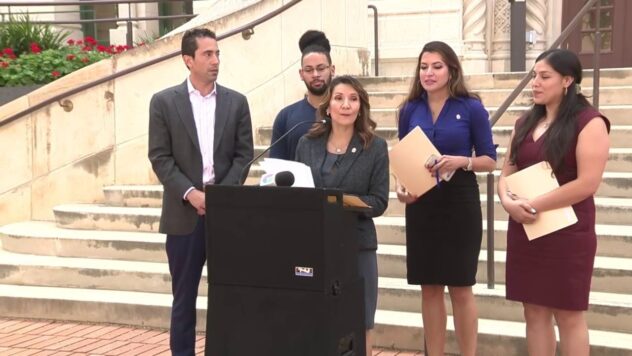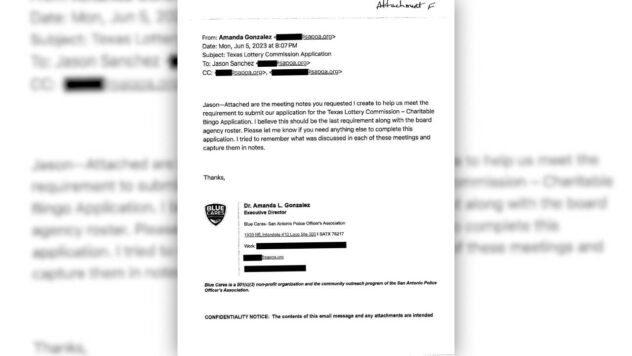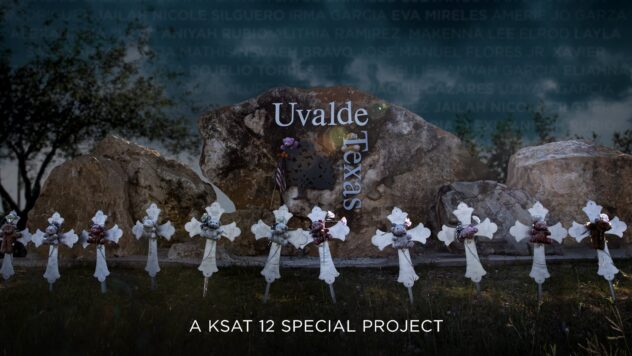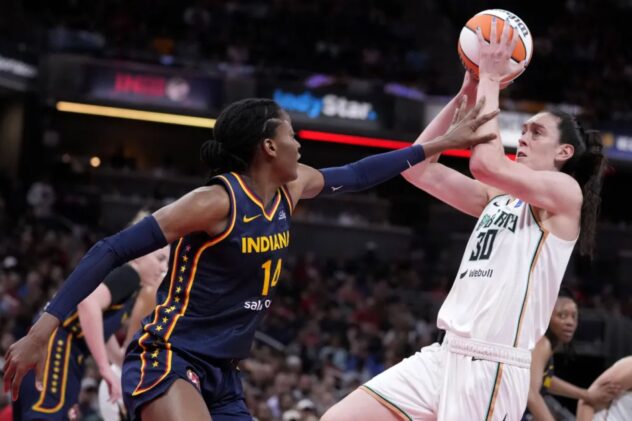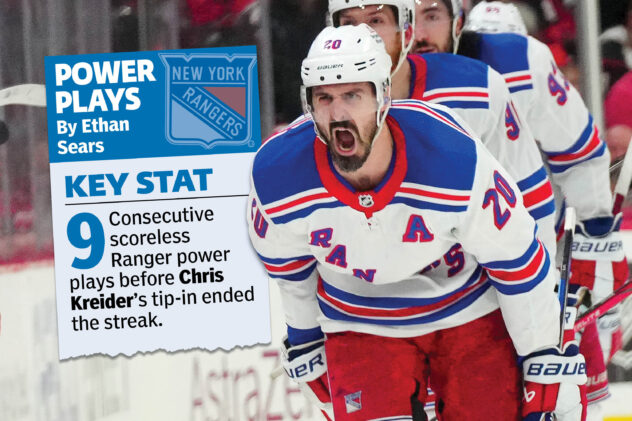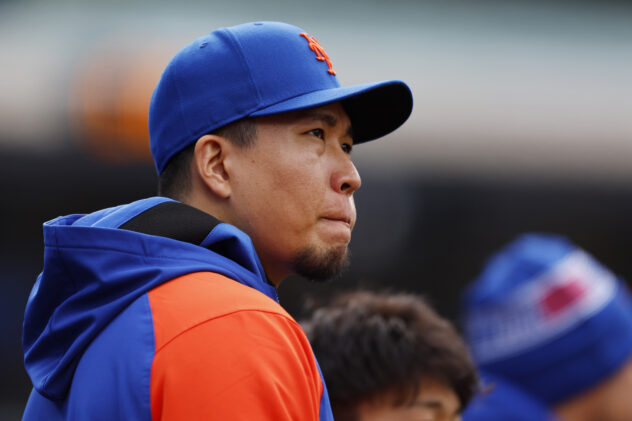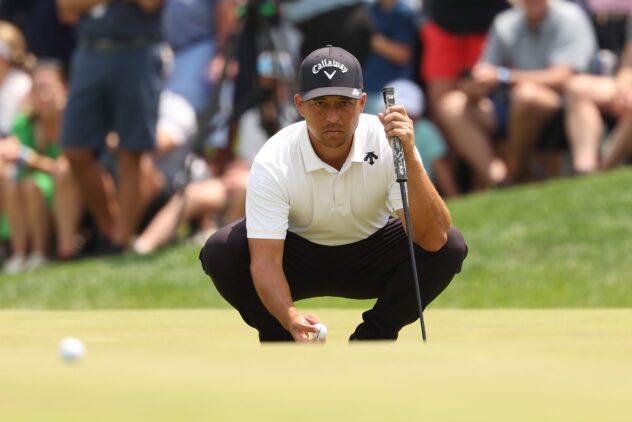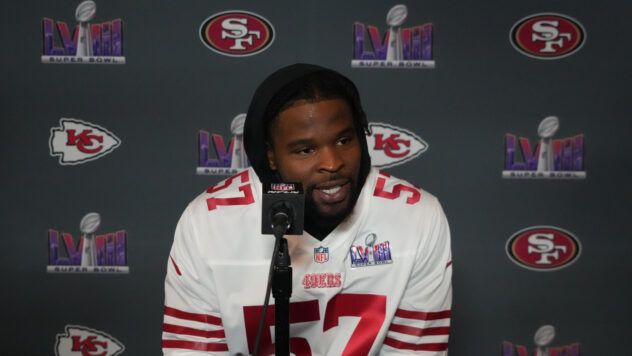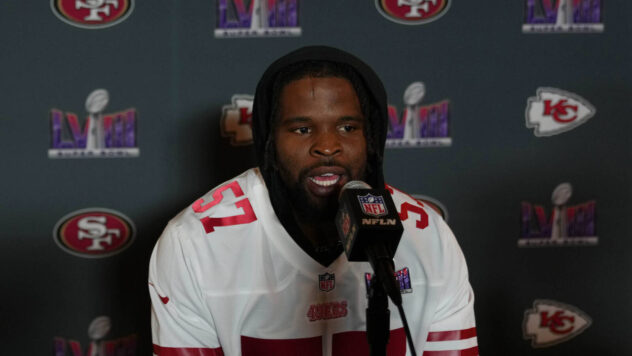Glitches, awkwardness and blank screens mar Biden’s virtual Tampa rally
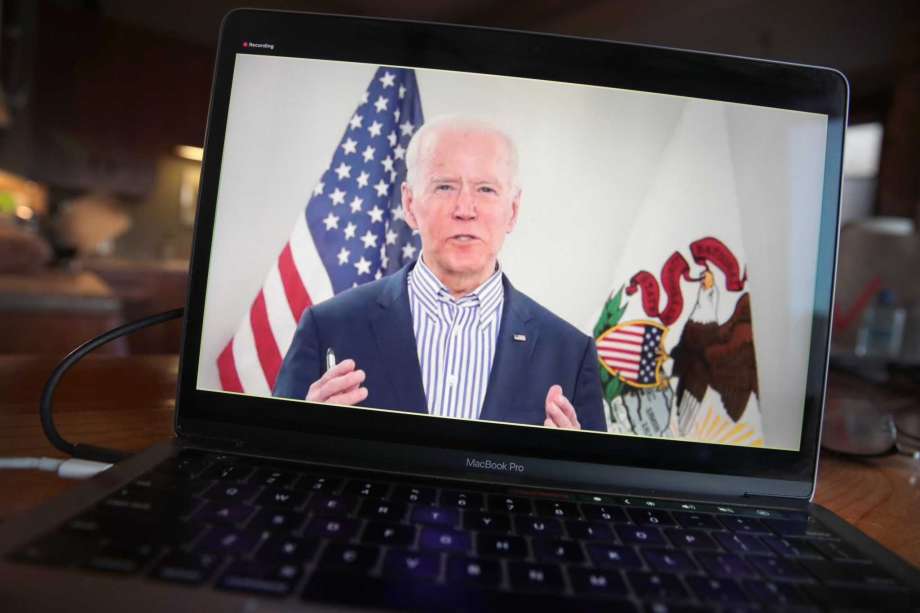
-
The COVID-19 pandemic has forced former Vice President Joe Biden to run a virtual campaign, and his absence may cost him in 2020. Biden also has a lot of work to do with Latino voters. Here, he holds a virtual campaign event in March in Chicago.
The COVID-19 pandemic has forced former Vice President Joe Biden to run a virtual campaign, and his absence may cost him in 2020. Biden also has a lot of work to do with Latino voters. Here, he holds a virtual
Photo: Scott Olson /TNS
The COVID-19 pandemic has forced former Vice President Joe Biden to run a virtual campaign, and his absence may cost him in 2020. Biden also has a lot of work to do with Latino voters. Here, he holds a virtual campaign event in March in Chicago.
The COVID-19 pandemic has forced former Vice President Joe Biden to run a virtual campaign, and his absence may cost him in 2020. Biden also has a lot of work to do with Latino voters. Here, he holds a virtual
Photo: Scott Olson /TNS
“They introduce me?” a blurry Joe Biden asked five seconds after he appeared on-screen. “Am I on?” he added, as he walked toward the camera on choppy video and removed his aviator sunglasses.
What was supposed to be a crisp and cool introduction instead stoked confusion.
“Good evening, Tampa,” the presumptive Democratic presidential nominee said. “I wish we could have done this together and it had gone a little more smoothly.”
“This” was an event Thursday billed as a “Virtual Rally with Joe Biden in Tampa.” It was an hour plagued by technical glitches, awkward pauses, delays and even some blank screen time.
For a campaign seeking a substitute for the rousing events that Biden would be holding if not for the coronavirus, the first-of-its kind rally served as a tough lesson about the perils of remote campaigning that played out in real time.
At the start, it had all of the trappings of a typical Biden campaign rally. A high schooler led the Pledge of Allegiance from his room. DJ Jack Henriquez played upbeat tunes. An emcee welcomed speakers by name.
But as the rally went on, problems surfaced.
There was the cut to Janet Cruz, a state senator who sat silent before the screen cut away from her, only to cut back without explanation moments later. There was the shot of Rep. Charlie Crist, D-Fla., dabbing his chin as he waited in silence against a backdrop of palm trees and high rises. It was unclear whether he knew he was on.
And throughout, there was distorted video and audio that some on social media likened to transmissions coming in via a dial-up modem.
The event showed how the pandemic has dramatically changed the campaign. It also underlined the growing pressure on Biden to expand his footprint in the battleground states expected to decide the November election.
Even before it kicked off, Biden’s supporters acknowledged the virtual rally was a far cry from the excitement generated by a candidate’s actual visit to a crucial swing state. John Morgan, a top Biden donor from Florida, said he was not even planning to tune in.
Still, Biden has few options, he added. “You have to try,” Morgan said. “If not, you just sit there on your Peloton and look out the window. It’s like these restaurants who are serving takeout. Is that the best option? No. But it’s an option.”
At one point, as footage of Crist speaking became so hard to follow, the screen went to black, piping in his audio with no video feed.
When Biden finally appeared from his home in Delaware, he was clearly aware of the issues. As he spoke, the technical issues continued, making parts of his speech indiscernible.
“We need to remember who we are. We’re the United States of America,” he said toward the end, a line he has often used on the campaign trail. As he spoke, a bird could be heard singing loudly in the background.
A Biden campaign spokesman did not immediately respond to a question seeking clarity on the cause of the technical issues.
Thursday’s event was broadcast on the Biden campaign website and on YouTube, allowing anyone to view it, including those outside of Florida. Biden digital director Rob Flaherty said before it started that the campaign collected sign-in information from supporters as it would at a traditional rally.
Organizers promoted the event via Facebook ads in the Tampa area and sent people reminders, Flaherty said. For the future, the campaign is contemplating enabling people to sign in and get an exclusive watch-and-chat experience, he said.
Biden’s rally was the second of two Florida virtual events on Thursday. At a roundtable with African-American leaders from Jacksonville, Biden made his most forceful comments yet on the killing of Ahmaud Arbery, a young black man from Georgia killed while jogging by two armed men who told police he looked like a burglary suspect.
Biden decried the shooting as part of a “rising pandemic of hate” that he said requires a new focus on mending racial inequities.
Arbery was “shot down in cold blood,” Biden said, comparing a video of the shooting to seeing him “lynched before our very eyes.” He said Arbery’s family deserves “a swift, full and transparent investigation.”
Florida is seen by strategists in both parties as an important battleground in November. Donald Trump carried the state in 2016, but Biden’s strong performance there in the primary and his to appeal to the state’s many older voters has raised Democratic hopes of turning it blue.
In a typical year, a campaign visit to such a state would motivate supporters, garner attention from local news outlets and signal to voters that the candidate cares about the state. Unable to do those things in person, the Biden campaign sought to replicate the feeling of a candidate visit, even if Biden never set foot outside his home six states away.
Biden may face additional pressure to ramp up his visibility since he’s challenging a sitting president, one who has resumed traveling and holding public events. President Trump on Tuesday visited a mask production facility in Arizona, his first trip outside the Washington area since late March. Like Florida, Arizona is seen as a competitive state in November.
Some Democrats have voiced worries about Biden’s low profile and have urged him to make a bigger splash in the national debate over covid-19. Because Biden does not currently hold public office, he has sometimes been overshadowed not only by Trump but by other Democrats such as House Speaker Nancy Pelosi of California and New York Gov. Andrew Cuomo.
Biden has ramped up efforts to host state-specific virtual events, a strategy his team says it plans to continue. On Wednesday, Biden’s wife, Jill Biden, appeared in a trio of online gatherings with supporters in Michigan, a crucial state that Trump won in 2016.
Appearing as one of several faces in a Zoom grid, she recalled that Michigan was the last state she had visited in person, since Michigan’s March 10 primary turned out to mark the end of traditional campaigning this year.
“The world has changed immeasurably since that trip,” Jill Biden said, speaking from the Bidens’ makeshift basement television studio with its backdrop of books, photos, a football and a flag folded into a triangle. “And we’ve had to figure out, you know, what it means to run a presidential campaign when you can’t fly or have a bus tour or even visit people’s homes.”
She asked the participant to picture a moment when Trump is no longer president.
“I want to take you into the future,” Jill Biden said. “It’s a beautiful morning and you’re sipping your coffee. You pick up the morning paper. And the headline isn’t about some late-night tweetstorm. Instead, it’s about how the United States is once more leading a global health security agenda.”
It was enough to make Katie Scott, who participated in the event, become emotional. “I felt like was going to cry,” she told Jill Biden. Conversations during the event were limited to the supporters the campaign had lined up.
“November is only five and a half months away, so keep the faith,” Jill Biden responded.
“I’m hanging on,” Scott replied.
The switch to remote campaigning is particularly jarring when it comes to Biden because personal interactions are such a staple of his pitch to voters. During the primary, he had a habit of engaging with fans and critics at town halls, drawing both cheers and scorn. He often stuck around long after events ended in Iowa and New Hampshire to shake hands, snap selfies and mingle with the crowds who came to see him.
The pandemic has removed him from the setting that many allies had hoped would showcase his empathy and expand his appeal in the general election.
Some efforts to re-create that personal touch remotely have been more effective than others. Biden has been holding virtual fundraisers, including one on Wednesday that more than 100 guests attended. That’s enabled him to replenish his campaign coffers after a competitive primary and give donors a chance to hear directly from the candidate.
Less successful has been an attempt to set up what the campaign called a “virtual rope line,” a reference to the one-on-one conversations Biden had with voters after his campaign appearances. He would often grasp a voter’s hand or shoulder and listen as the voter shared a personal story.
But the campaign is unlikely to continue virtual rope lines, Flaherty said, concluding that it is an unwieldy format in part because of Biden’s proclivity for chatting at length with supporters.
– – –
The Washington Post’s Felicia Sonmez contributed to this report.



